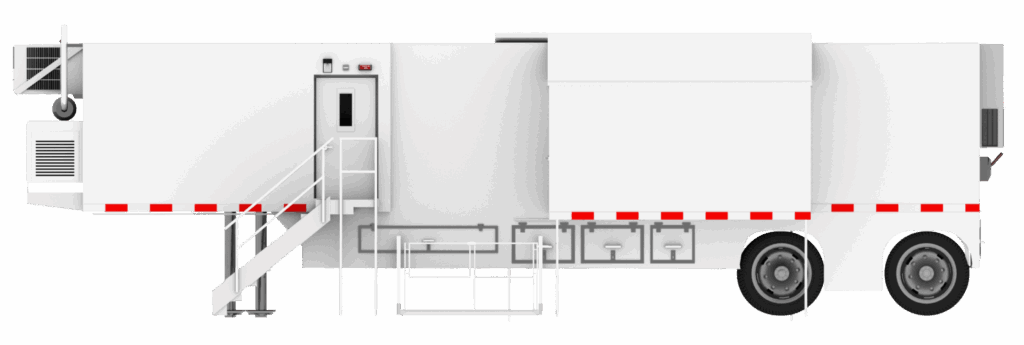
A common question we hear people ask is “what types of procedures can be performed in a Mobile Cath Lab?” Well, the short answer is really just about any cases you are comfortable doing in a Mobile Cath Lab. It can be difficult to provide one set answer to this question because each hospital and CV program is unique and the specific need for a mobile lab can vary so it helps to start with a few basic questions.
1. WHAT TYPE OF IMAGING SYSTEM?
First, what type of imaging system is needed? Do you need to do cardiac cath, vascular procedures, or a combination of both? All of these options are available in our mobile lab fleet. Some mobile labs have a straight cardiac x-ray imaging system with a 9″ or 20 cm detector (small field of view), systems designed to perform coronary procedures. Others are equipped with a vascular imaging system, one with a large 16″ or 40cm detector designed for peripheral vascular procedures. Others still have a “combo” cardiac & peripheral vascular imaging system that can perform both.
2. DIAGNOSTIC OR INTERVENTIONAL?
The next question to ask is whether to do diagnostic procedures or interventional procedures (or both) in a mobile cath lab. Diagnostic cardiac cath procedures were the first to be performed in a mobile lab in the late 1980’s and this is still a very common use today. (So much so, in fact, that today the term “Mobile Cath Labs” have come to be a catch-all phrase that also includes mobile vascular labs and mobile combo cath/vascular labs.) Diagnostic peripheral & vascular procedures are also commonly performed in a mobile lab setting. In recent years we have seen a growth in the number of cardiac and peripheral interventions being performed in an interim lab. Things like IR procedures, stents and pacemakers are very common and can be very safely performed in mobile labs these days.
3. ARE CATH LAB AIR STANDARDS REQUIRED?
For those who do interventional procedures a common question is whether or not the mobile lab meets the air flow and filtration requirements for a cath lab. Interventional procedures can be more complicated and involve therapy designed to treat the conditions that are diagnosed so it is important to meet these air standards. (These requirements include positive pressure to adjacent rooms, HEPA air filtration, and a minimum of 3 fresh air exchanges/hour and 15 room air exchanges/hour.) At Modular Devices we engineer all of our labs to not only meet but to exceed these requirements. When meeting these air standards is it is also suggested to physically connect Mobile Cath Labs to the hospital with a covered, enclosed walkway or corridor to keep the outside air from entering the mobile lab when the doors are opened.
4. MOBILE OR MODULAR LAB?
One more question to consider is what type of interim lab is the best fit for what you need to do. At Modular Devices Inc. we offer two options, a Mobile Cath Lab trailer and a larger Modular Cath Lab. Mobile labs are best for short term projects, routine diagnostic procedures, and when there isn’t a need for a large procedure room. Modular labs, on the other hand, are 25-50% larger than a mobile trailer and have the advantages of being at ground-level for easy patient access. Modular labs are the preferred option for longer term projects (start-ups, expansions, and long construction projects), for more complicated interventional procedures, and for emergent procedures like STEMI’s where a large lab interior and ease of entry are critical.So before making a big decision on what types of procedures you might want to perform in a mobile lab, start with these questions to help you narrow it down a bit. Or just give us a call and we would be happy to walk through the process with you and help determine the types of cases you will be comfortable performing in a mobile or modular cath lab.

